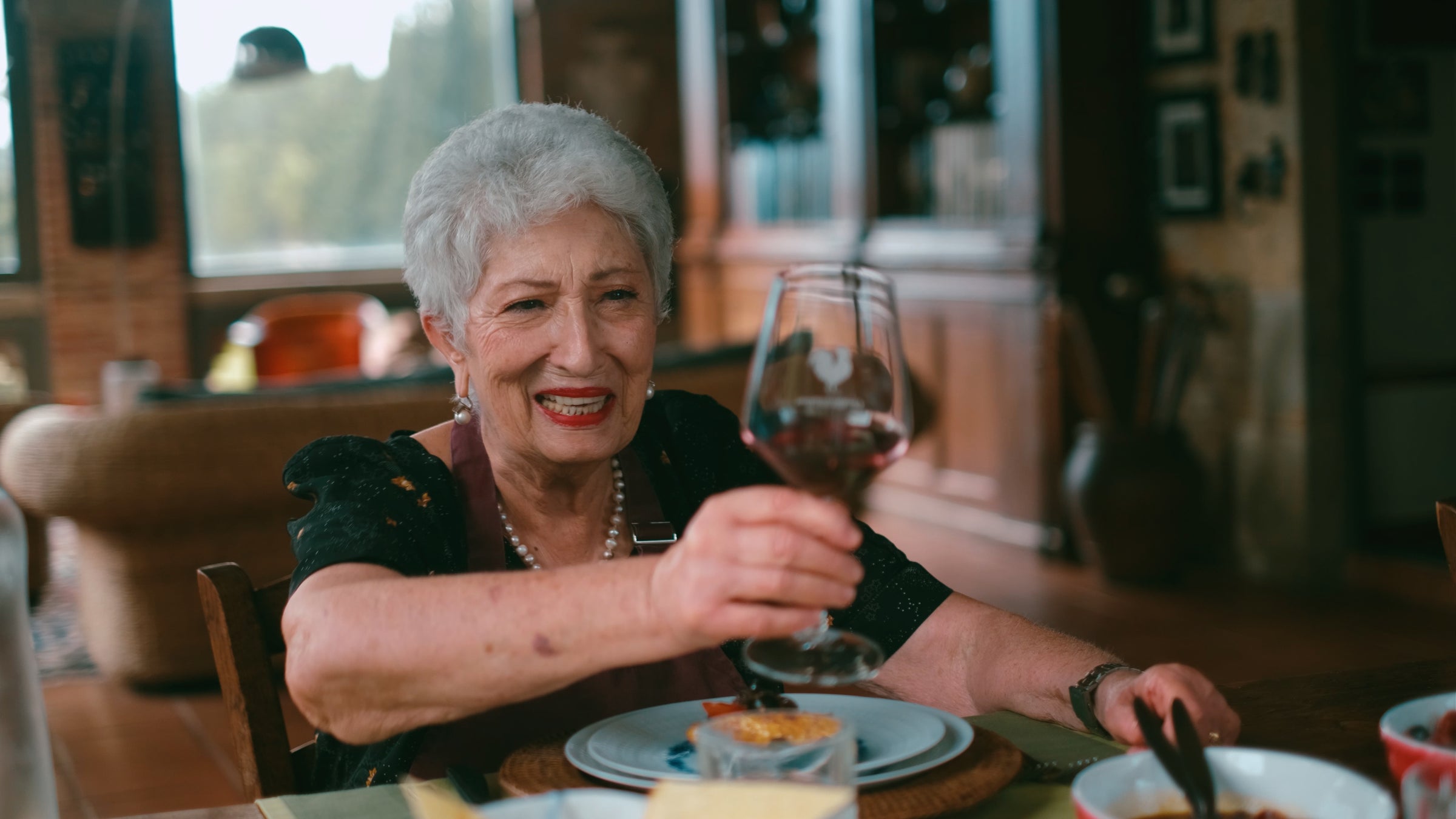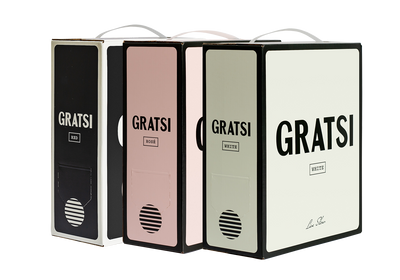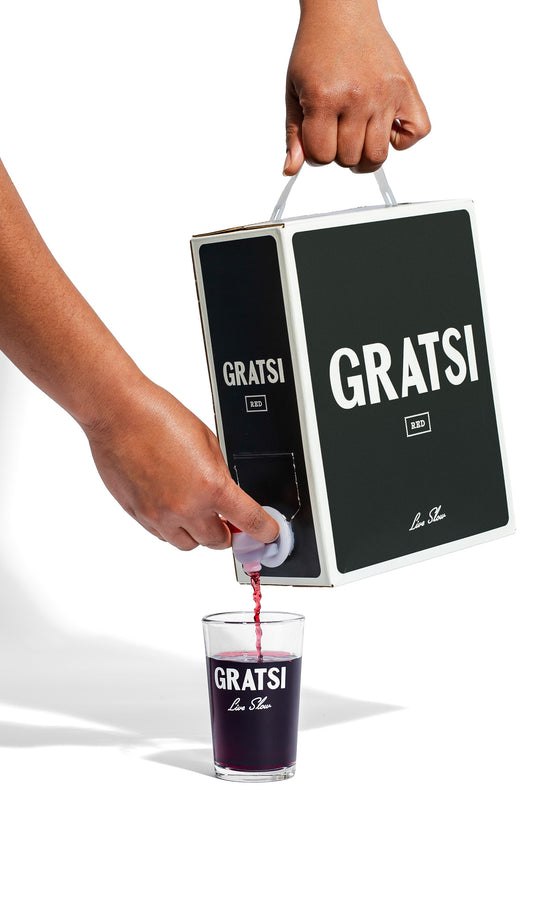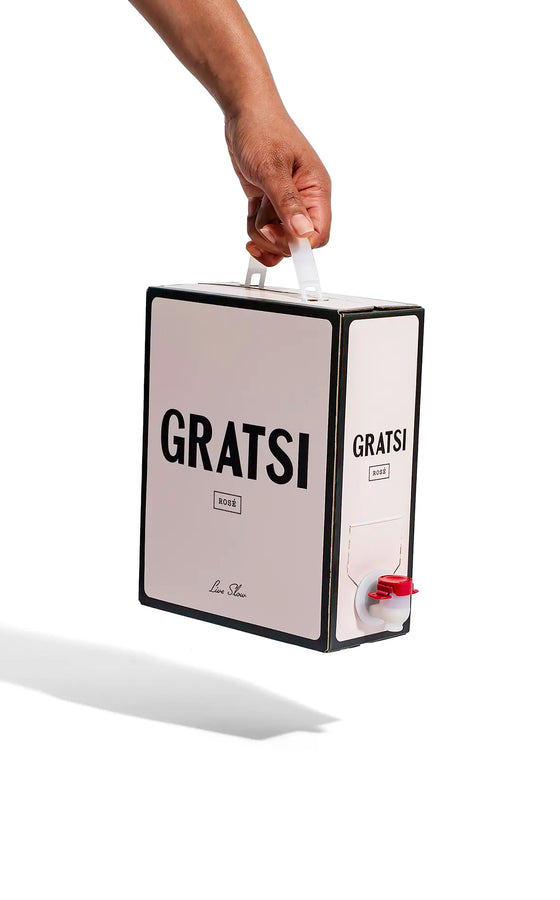A Sunday morning with Nonna Laura
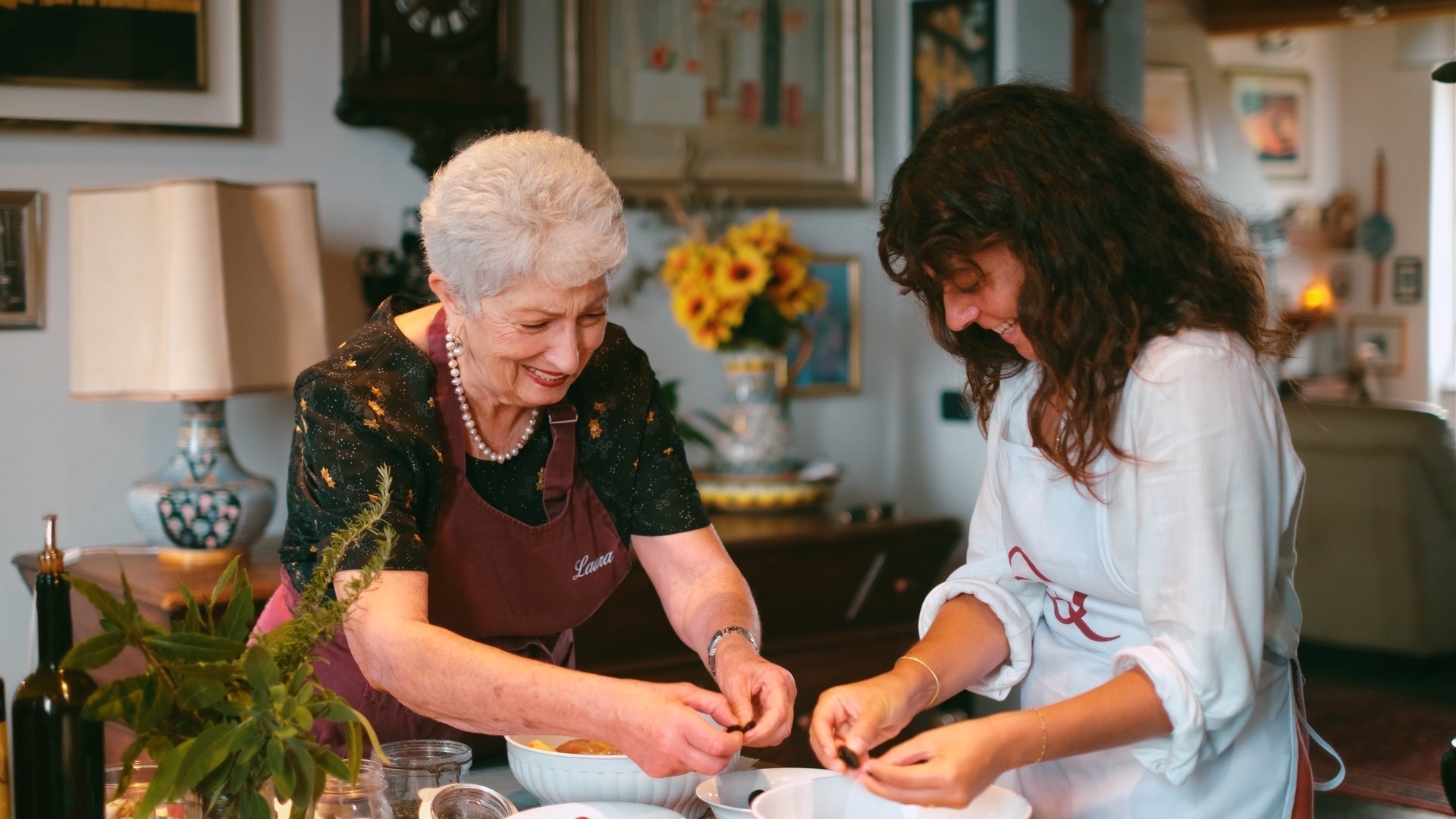
NONNA WISDOM
A Sunday morning with Nonna Laura
By Gianina Rose
October 07, 2025
Castellina in Chianti, on a Sunday in mid-September, carried that timeless aura only Tuscan villages can offer. Stone streets polished by centuries, flower-filled windows, and a silence broken only by footsteps or the toll of church bells. That is where I met Nonna Laura, in front of the church at the heart of the town.
With her pearl necklace, matching earrings, and wine-red lipstick, she seemed like she had stepped out of a portrait. Elegant, with a clear voice and a smile that drew you in. Laura is not only a mother and grandmother: she is a strong, independent woman, running a large estate alongside her family. At Querceto di Castellina, the sprawling farm tucked among vineyards and olive groves, she hosts travelers from around the world, teaching them not just recipes but the philosophy of Tuscan cooking.
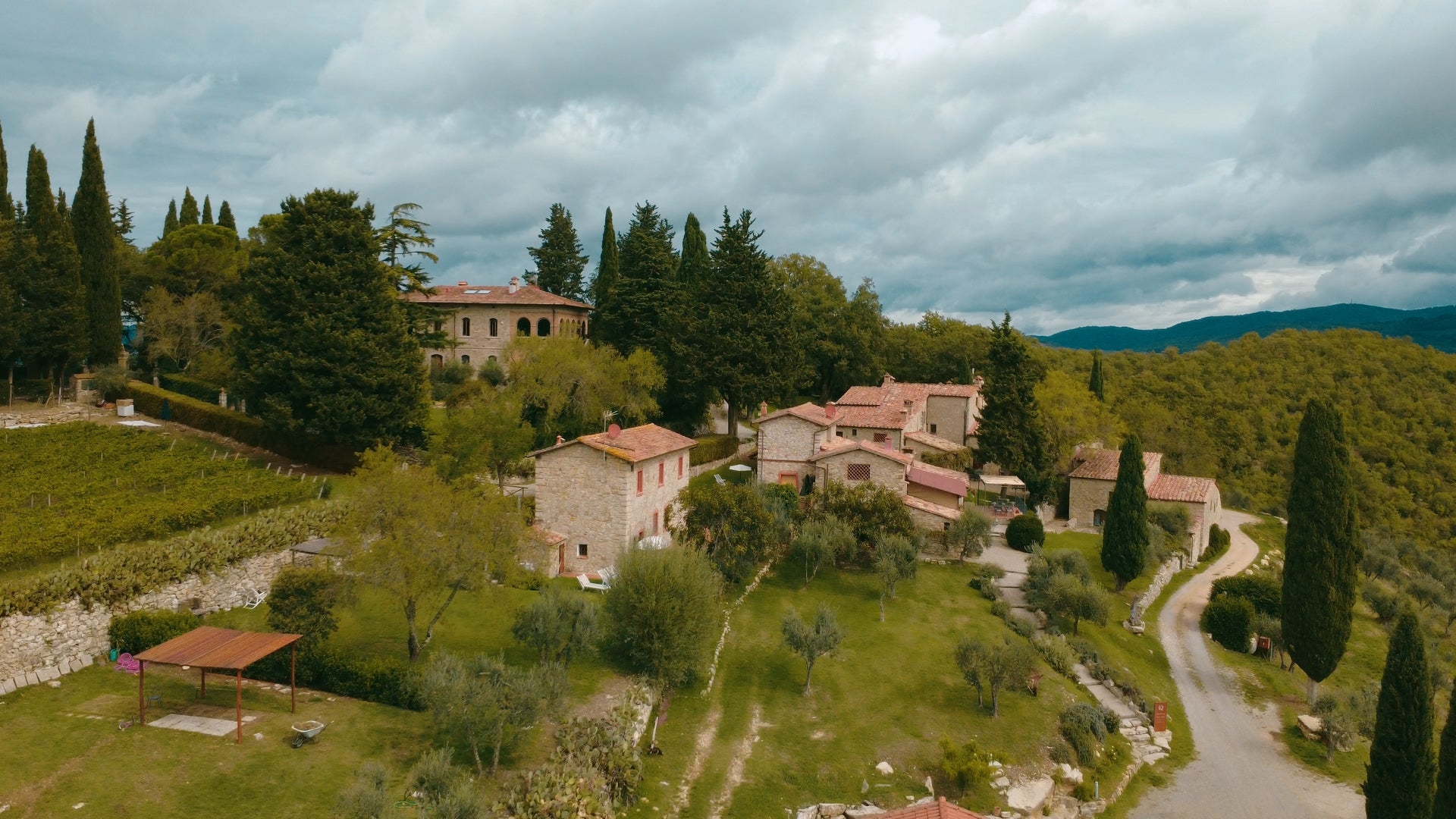
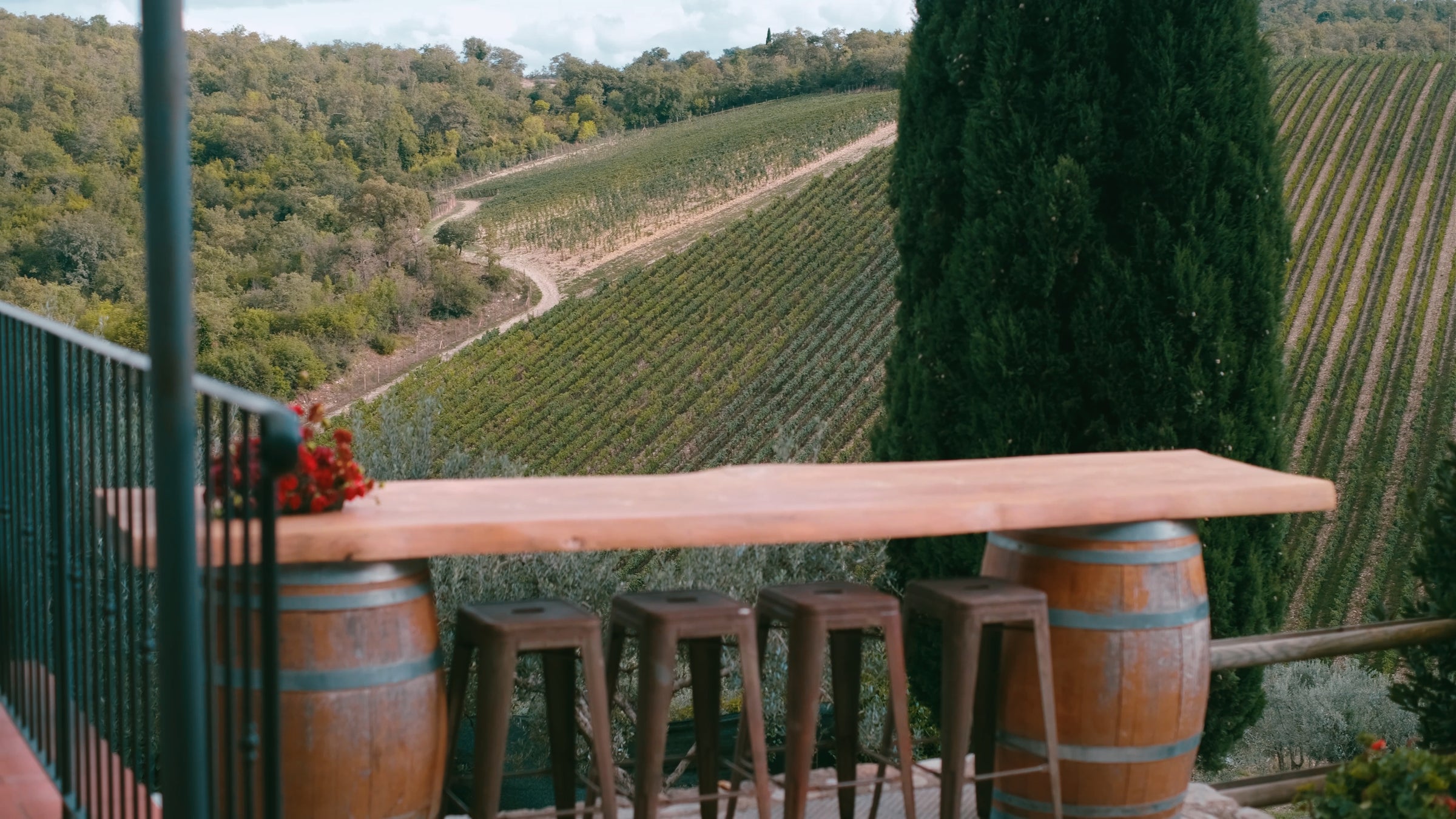
Our morning began at “Macelleria Stiaccini”, where Riccardo, the butcher, handed us a free-range rooster for our chicken cacciatora. The shop, all wood and marble, is a jewel in the center of the village, with a small bistro upstairs and shelves full of lardo, preserves, and cantucci. Riccardo knows Laura well and treats her with the kind respect reserved for women who are anchors of their community.
With the chicken wrapped and a warm loaf of schiacciata under our arm, Laura led me through Castellina’s medieval alleys. She pointed out the historic palazzi and told me about the families who had lived there, her voice steady and full of memory. Then, as we headed toward Querceto, she began to recount one of the most famous tales of this land: the legend of the Black Rooster, symbol of Chianti.
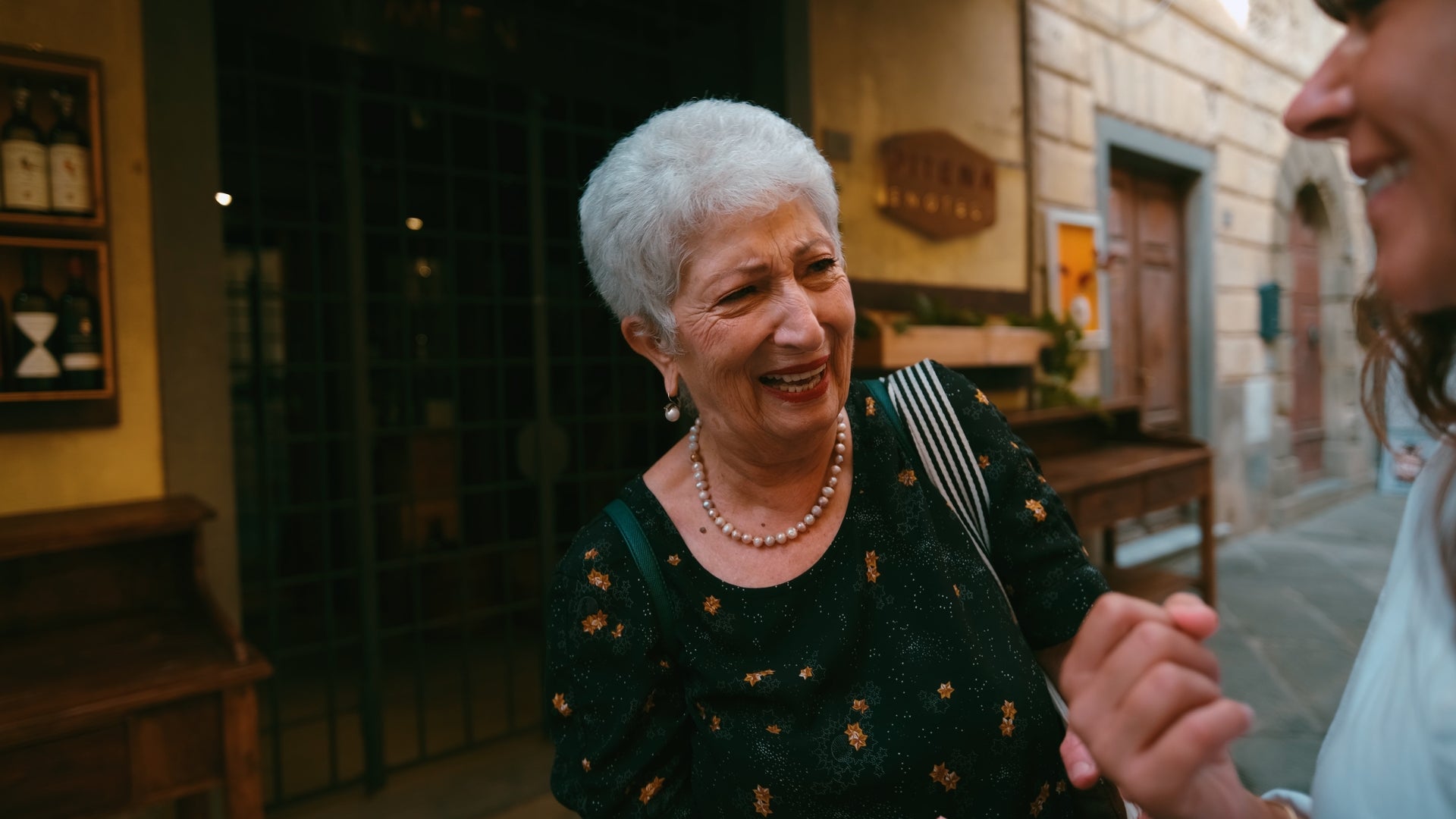
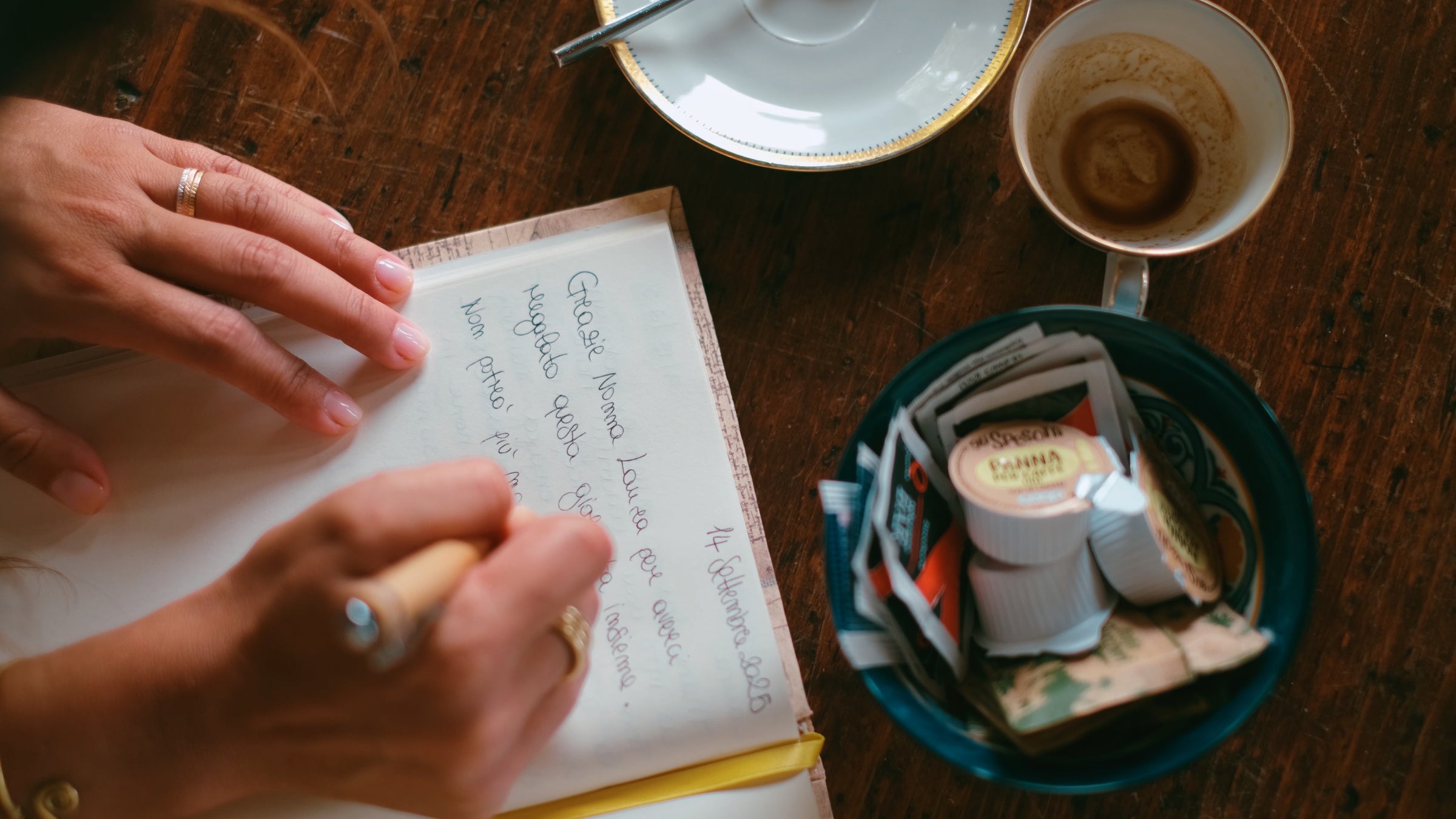
In the Middle Ages, Florence and Siena were bitter rivals, fighting over who would control the Chianti hills. To avoid endless battles, they decided on an unusual contest: at dawn, when a rooster crowed, a rider from each city would set off. Where the two riders met would mark the boundary between their territories.
Siena chose a beautiful white rooster, well-fed and pampered, certain it would be strong and ready to crow at sunrise. Florence, instead, chose a scrappy black rooster. They kept it hungry, in a dark cage, restless and eager. On the day of the contest, the starving black rooster crowed long before dawn, waking the Florentine rider who galloped south and covered a great distance before the Sienese rider had even started.
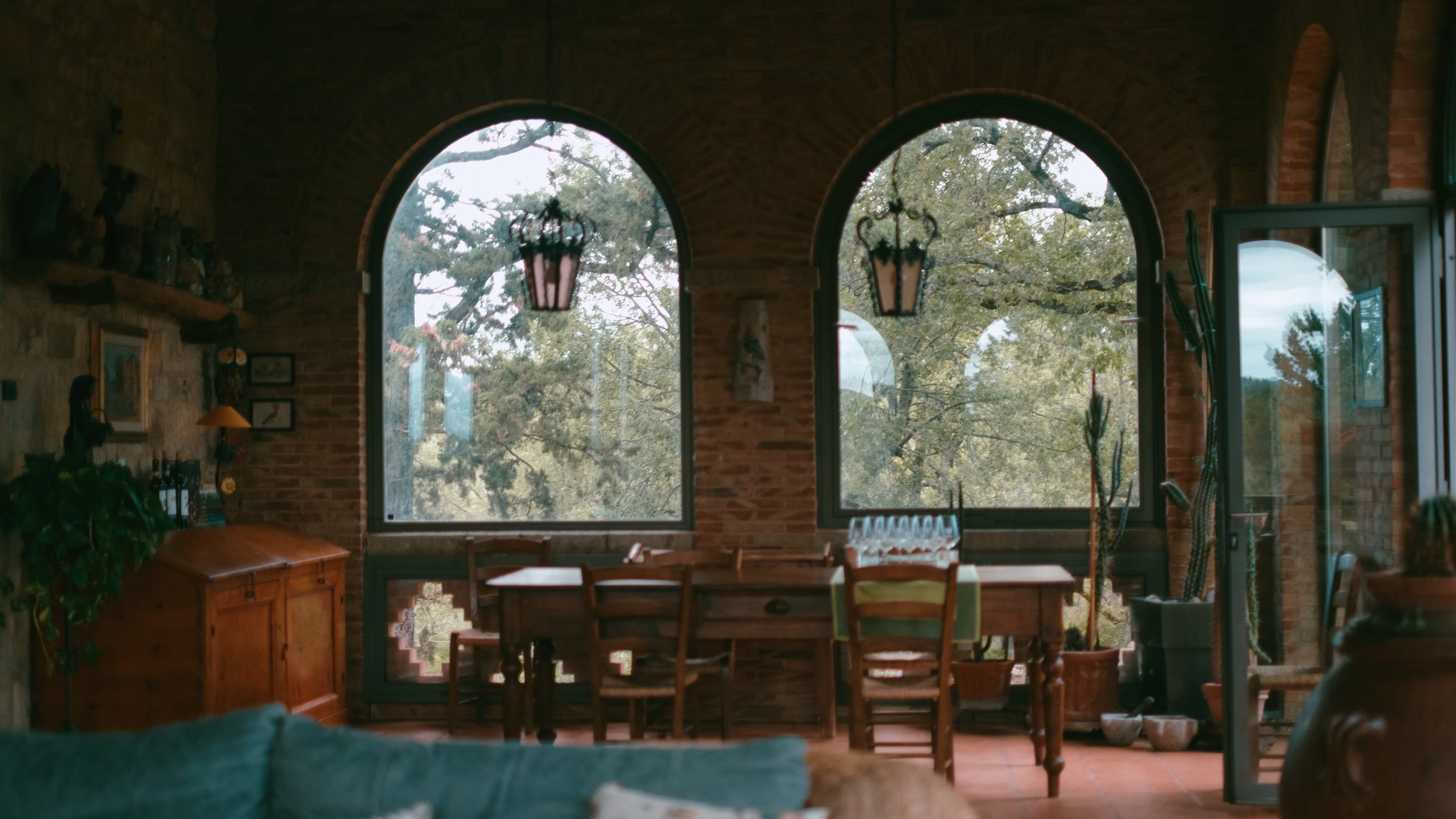
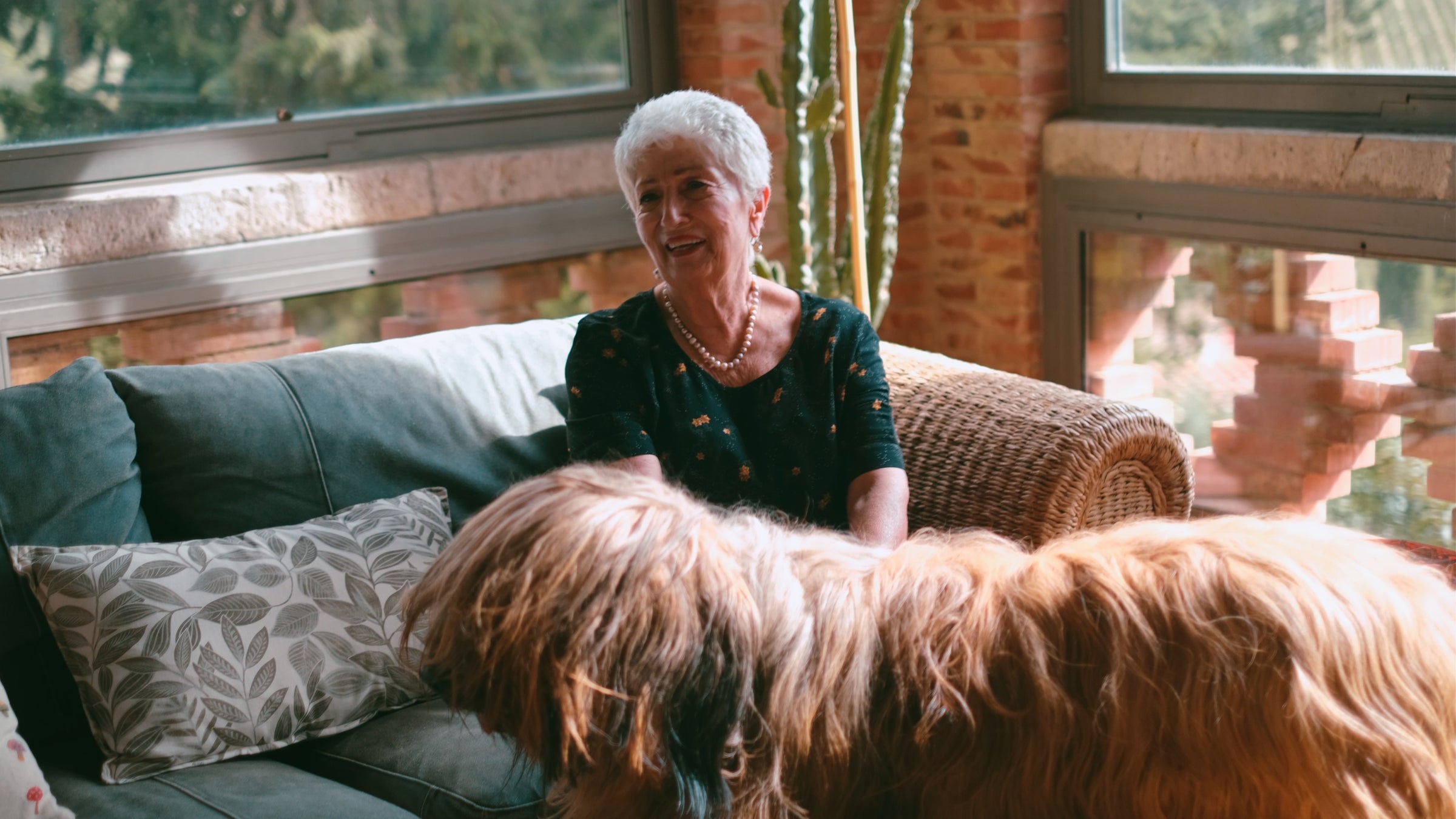
When the two finally met, it was only twelve kilometers from Siena. Almost all of Chianti, by that single clever trick, became Florentine territory. “You see,” she said with a smile, “that’s how we Tuscans are: practical, stubborn, but also full of imagination.”
At the entrance to Querceto, the cypress-lined drive welcomed us. Pompon, the family rabbit, hopped at our feet, while Norma, the enormous seven-year-old shepherd dog, came to greet us with the insistence of someone who always wants affection.
Laura’s home was spacious and light, yet filled with personal touches. Most striking was her collection of owls: more than two hundred, in ceramic, wood, and glass. “Some say they bring bad luck,” she told me with a mischievous smile, “but I like things that go against the grain. For me, owls bring joy.” In her kitchen, the large wooden table was covered in ingredients. The free-range chicken, black olives, cherry tomatoes, and a jar of finely chopped herbs: the secret seasoning Laura learned years ago from a butcher in Panzano. “This is my ally in the kitchen. Just a pinch, and every dish comes alive.” She massaged the chicken with olive oil and herbs. “Hands must feel the food,” she said, “that’s how you make it truly good.”
Our menu was simple but meaningful: “Cacciatora Chicken”, “Crostini with the Poor man’s caviar,” and “Liliana’s peppers”, named after the friend who passed the recipe to her. Each dish carried a story, a memory, a piece of Laura’s world.
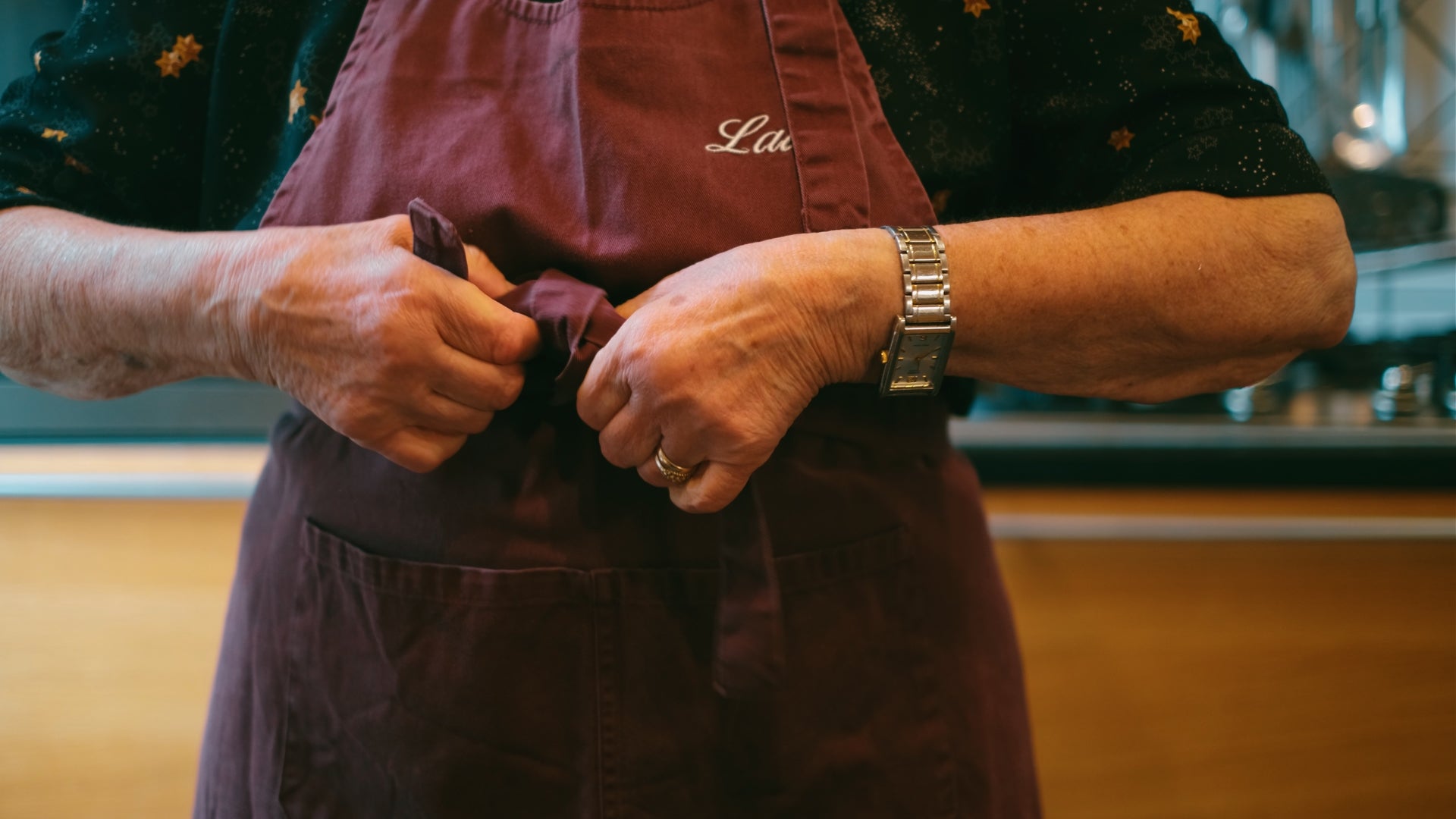
Recipes from Nonna Laura
Chicken Cacciatora
Ingredients (Serves 4–6)
- 1 whole free-range chicken (about 3–3.5 lbs), cut into pieces
- 4 tbsp extra-virgin olive oil
- 1 cup dry red wine (Chianti recommended)
- 2 garlic cloves
- 1 handful (about ½ cup) black olives, pitted and chopped
- 1½ cups cherry tomatoes, halved
- 2 tbsp tomato paste
- Salt and black pepper, to taste
- 2–3 tbsp Laura’s herb mix (see below)
Method
- Place the chicken pieces in a large bowl. Massage with olive oil and Laura’s herb mix until evenly coated.
- Heat a heavy pan over medium-high heat. Add the chicken and sear until browned on all sides.
- Pour in the red wine and let the alcohol evaporate.
- Stir in cherry tomatoes, tomato paste, garlic, and olives. Cover and simmer on low heat for about 40 minutes, until the chicken is tender and infused with flavor.
Serve hot with slices of Tuscan bread or schiacciata to soak up the sauce.
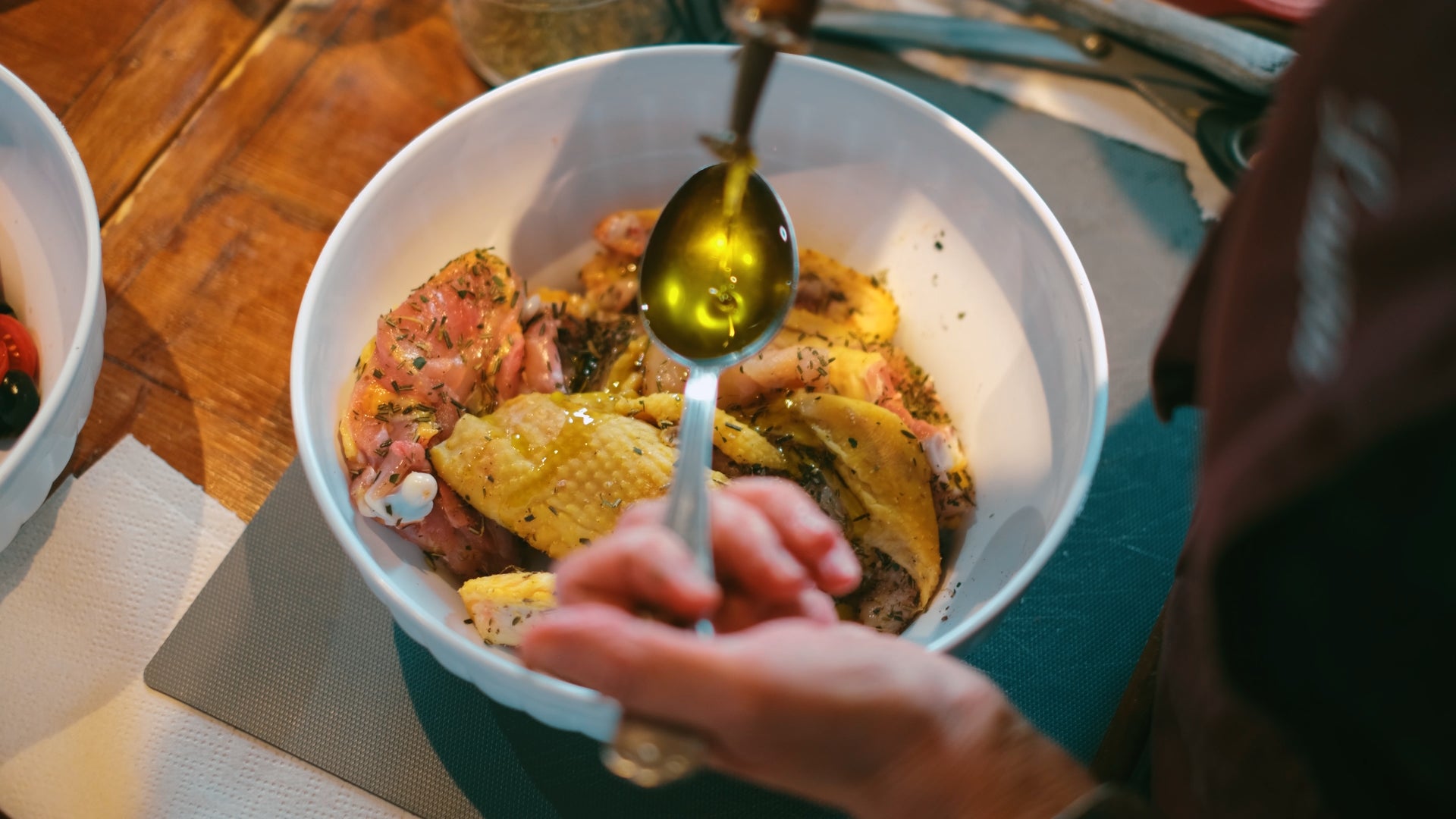
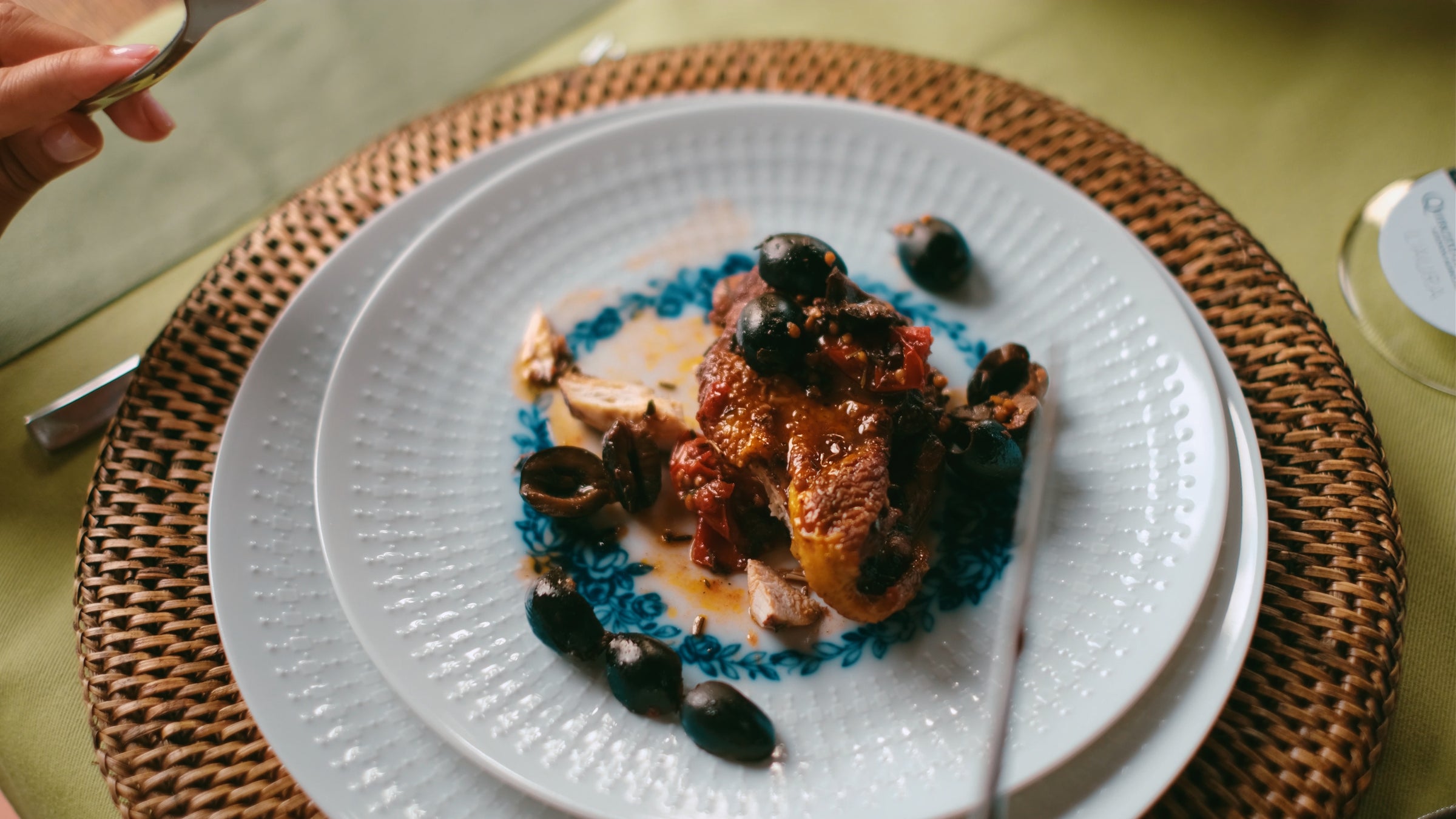
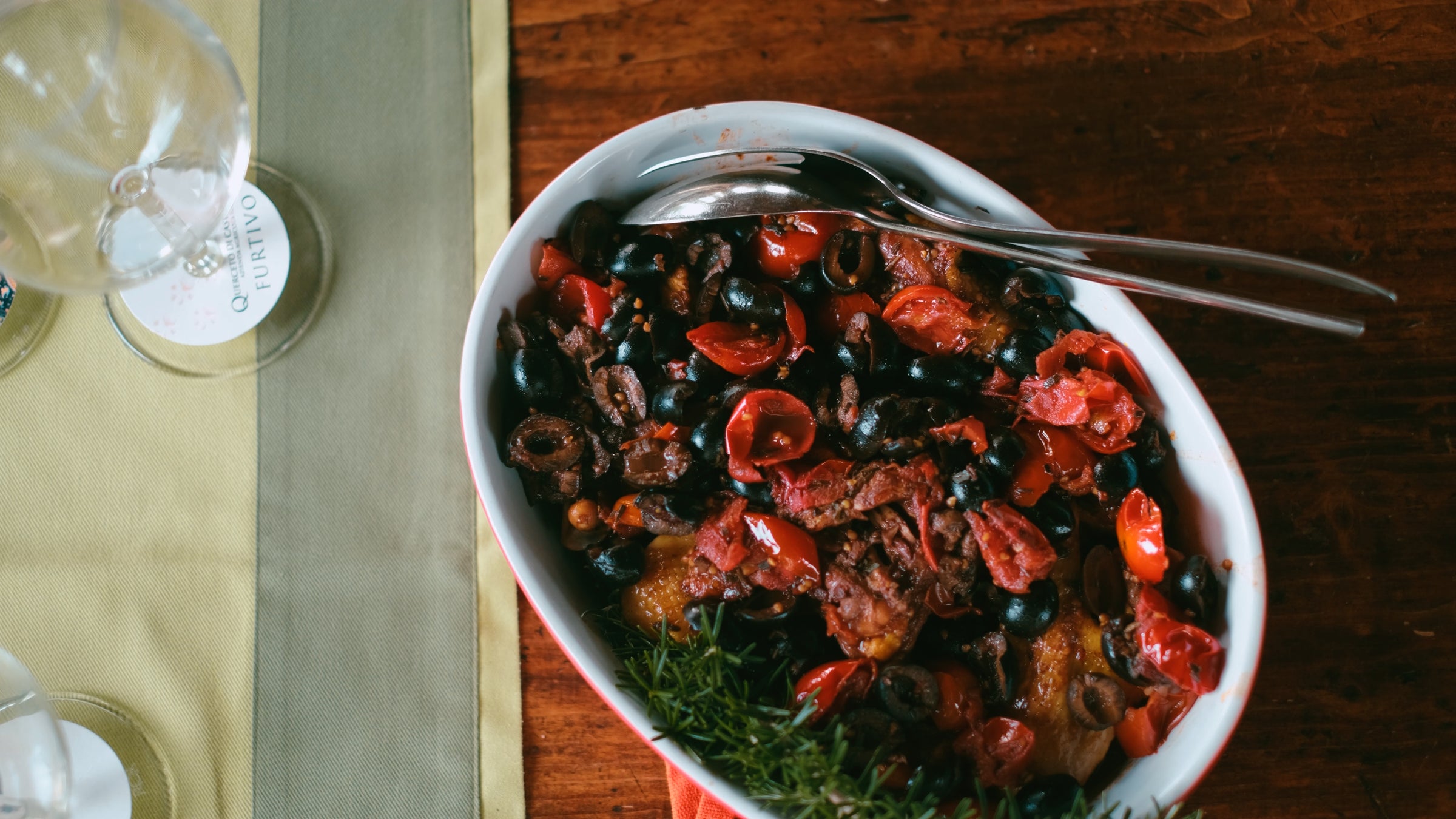
Laura’s Secret
On the large wooden kitchen table stood a simple glass jar that held Laura’s secret. Years ago, a renowned butcher from Panzano in Chianti taught her this aromatic mix, and it has since become indispensable.
The blend includes: bay leaves, rosemary, thyme, sage, juniper berries, pepper, salt, garlic, and helichrysum (Helichrysum italicum), known as the “Italian curry plant” for its spicy, curry-like fragrance. In the past, Laura would forage it in the woods near her home. Now she grows it on her balcony, harvesting fresh sprigs and mixing them into her blend.
She finely chops all the herbs, keeps them in a jar, and uses them to season meats, vegetables, and sauces. It was this mixture that gave her chicken cacciatora its unmistakable depth, needing little else besides oil and fire.
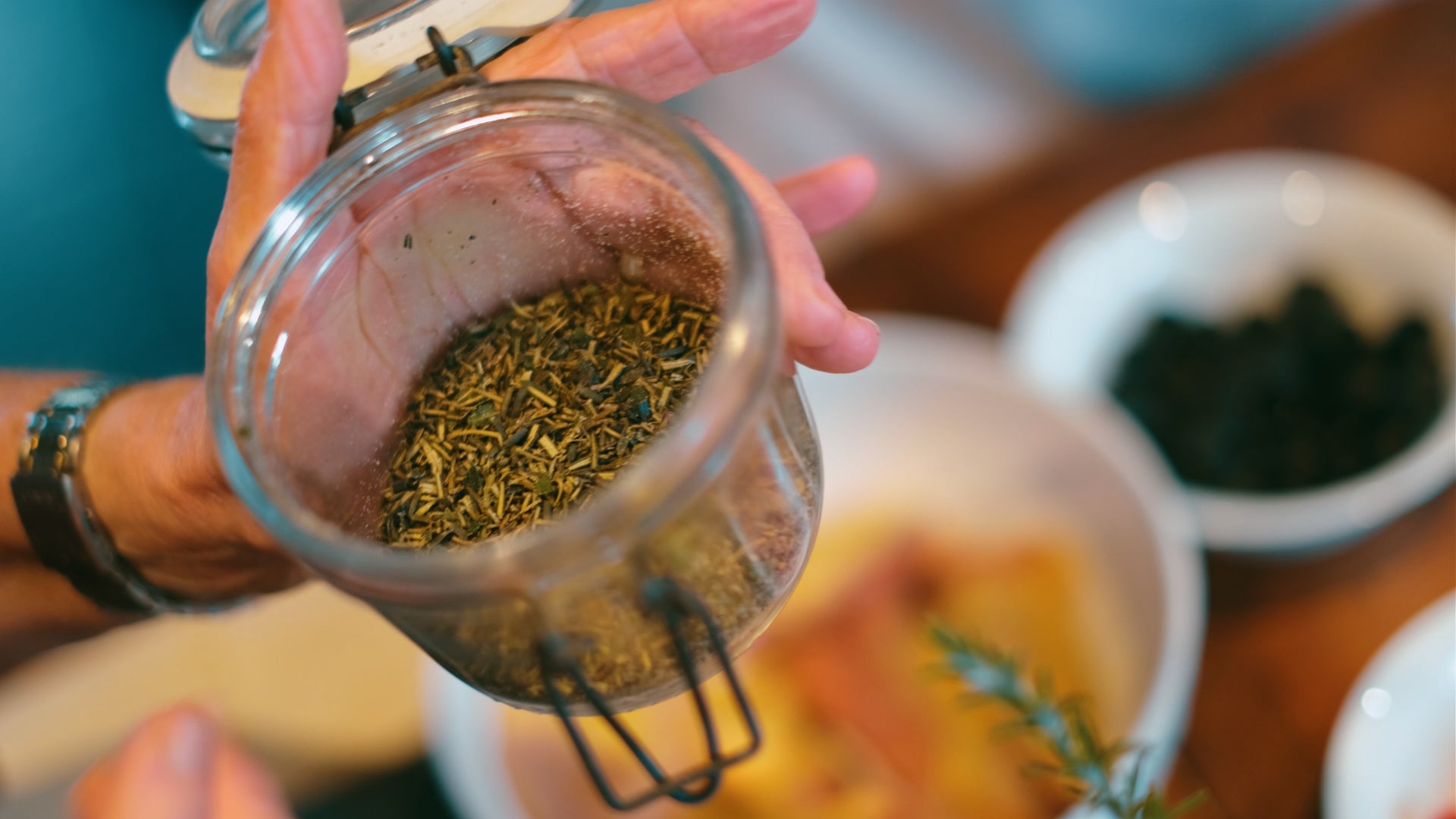
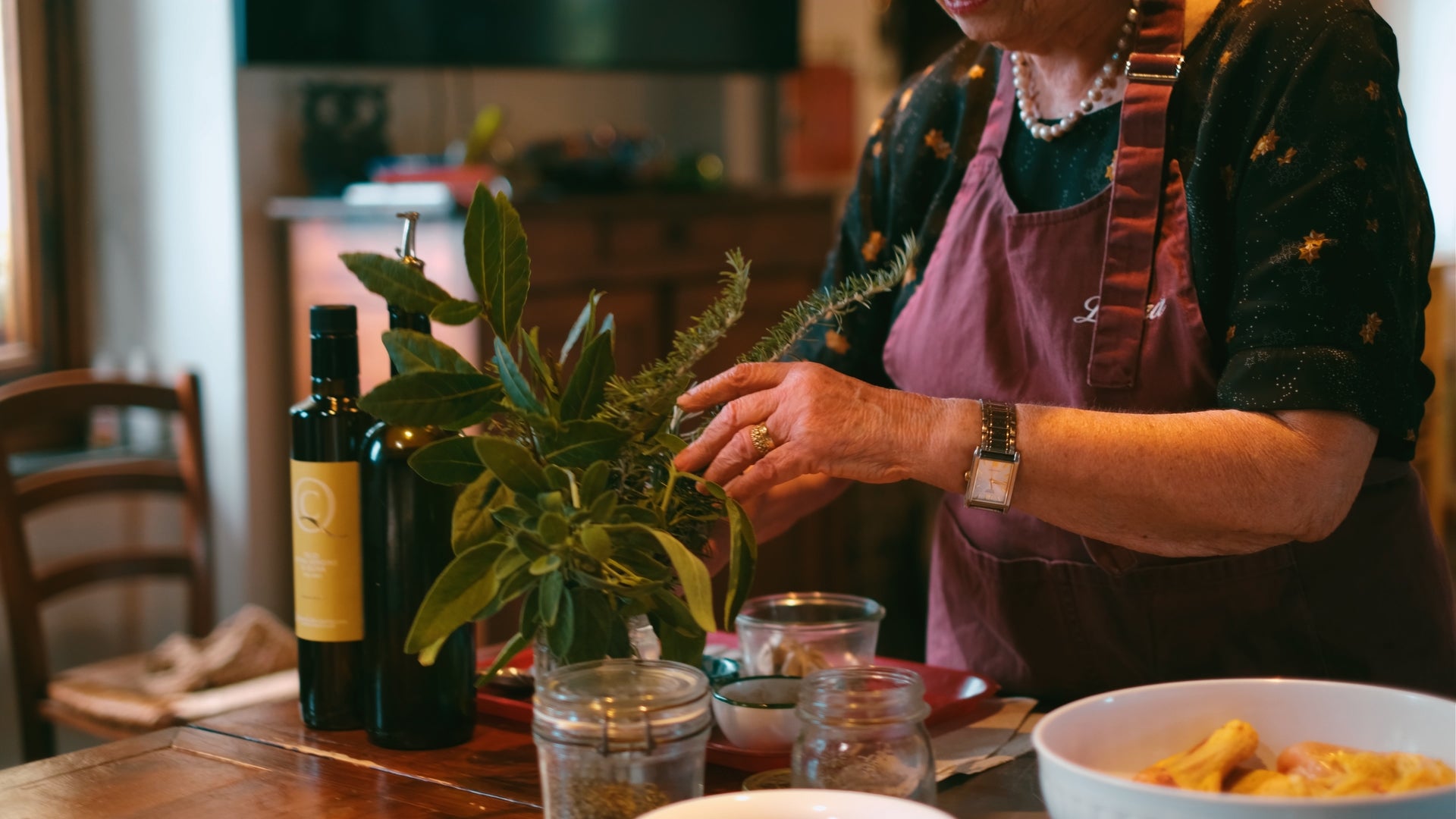
Crostini with “Poor Man’s Caviar”
Ingredients (Serves 4)
- 4 slices Tuscan bread (unsalted, lightly toasted)
- 1 cup black olives, pitted
- 2 tbsp unsalted butter, softened
- Juice of ½ lemon
Method - Chop the olives very finely until they form a coarse paste.
- Mix with butter, lemon juice, and a drizzle of olive oil.
- Spread generously over warm toasted bread and serve.
A drizzle (1–2 tsp) olive oil
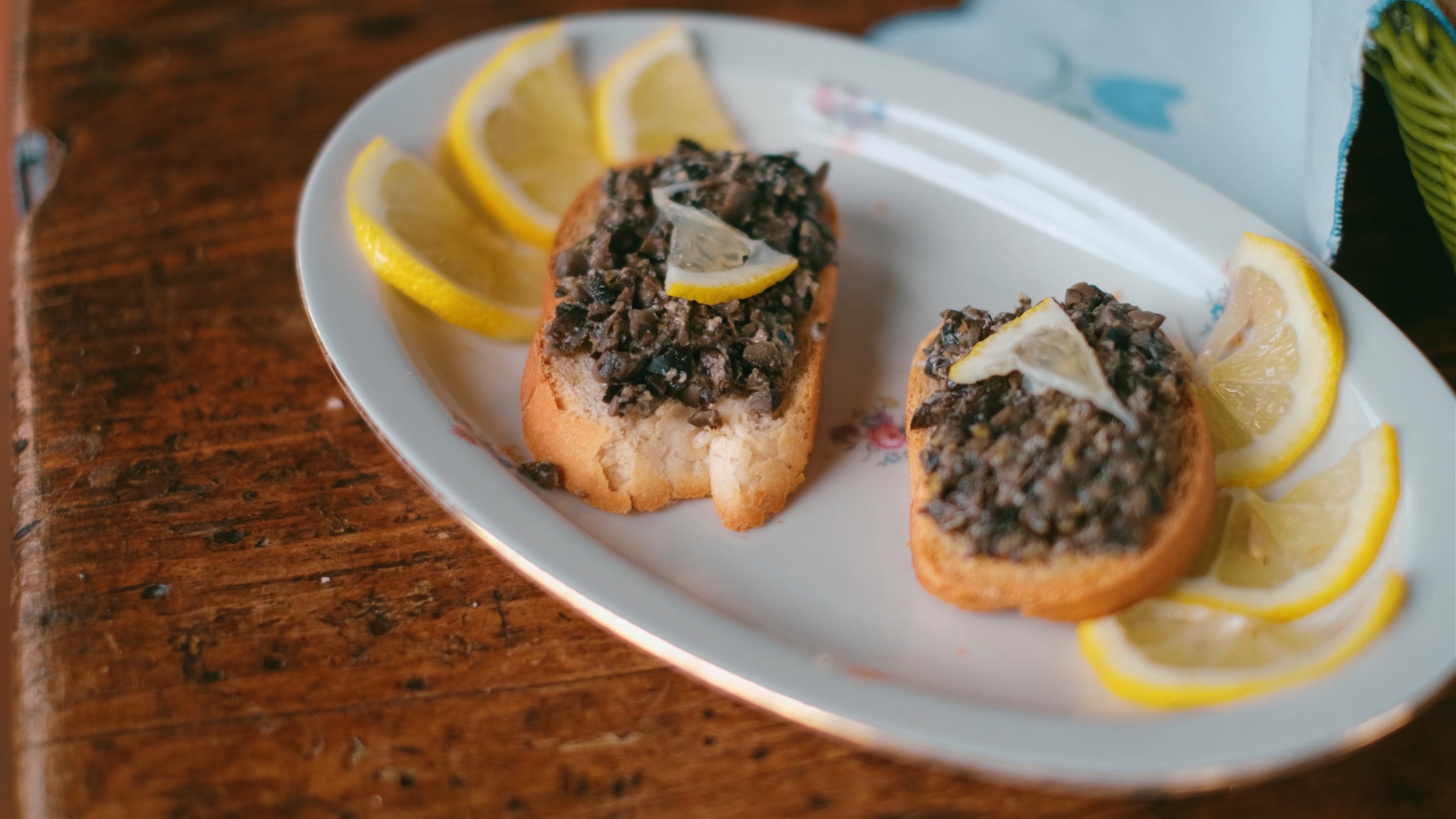
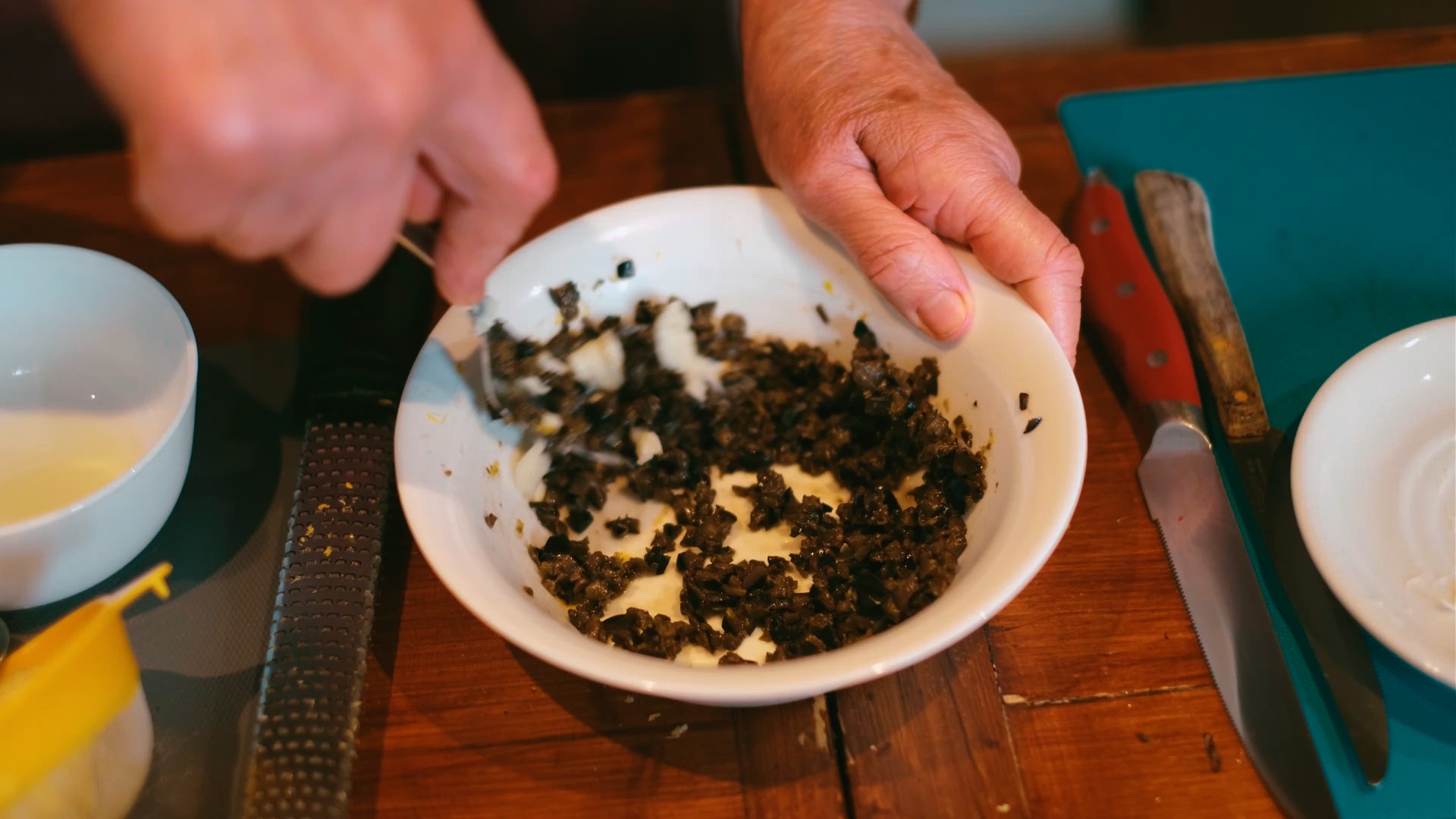
Why is Tuscan Bread Saltless?
As we spread the olive paste, Laura explained another Tuscan peculiarity: bread without salt, known as “pane sciocco”.
According to legend, in the 12th century Pisa blocked Florence’s salt supply, hoping to force surrender. Florence instead baked its bread without salt—a tradition that became a hallmark of the region. Others say it was a matter of cost, since salt was heavily taxed in Florence.
Dante himself, in the Divine Comedy, referred to the “salty bread of others” as a symbol of exile, contrasting it with Florence’s unsalted loaves. Today, this neutral bread is not a flaw but a strength: the perfect blank canvas to pair with Tuscany’s flavorful cured meats, cheeses, and rustic dishes like these crostini.
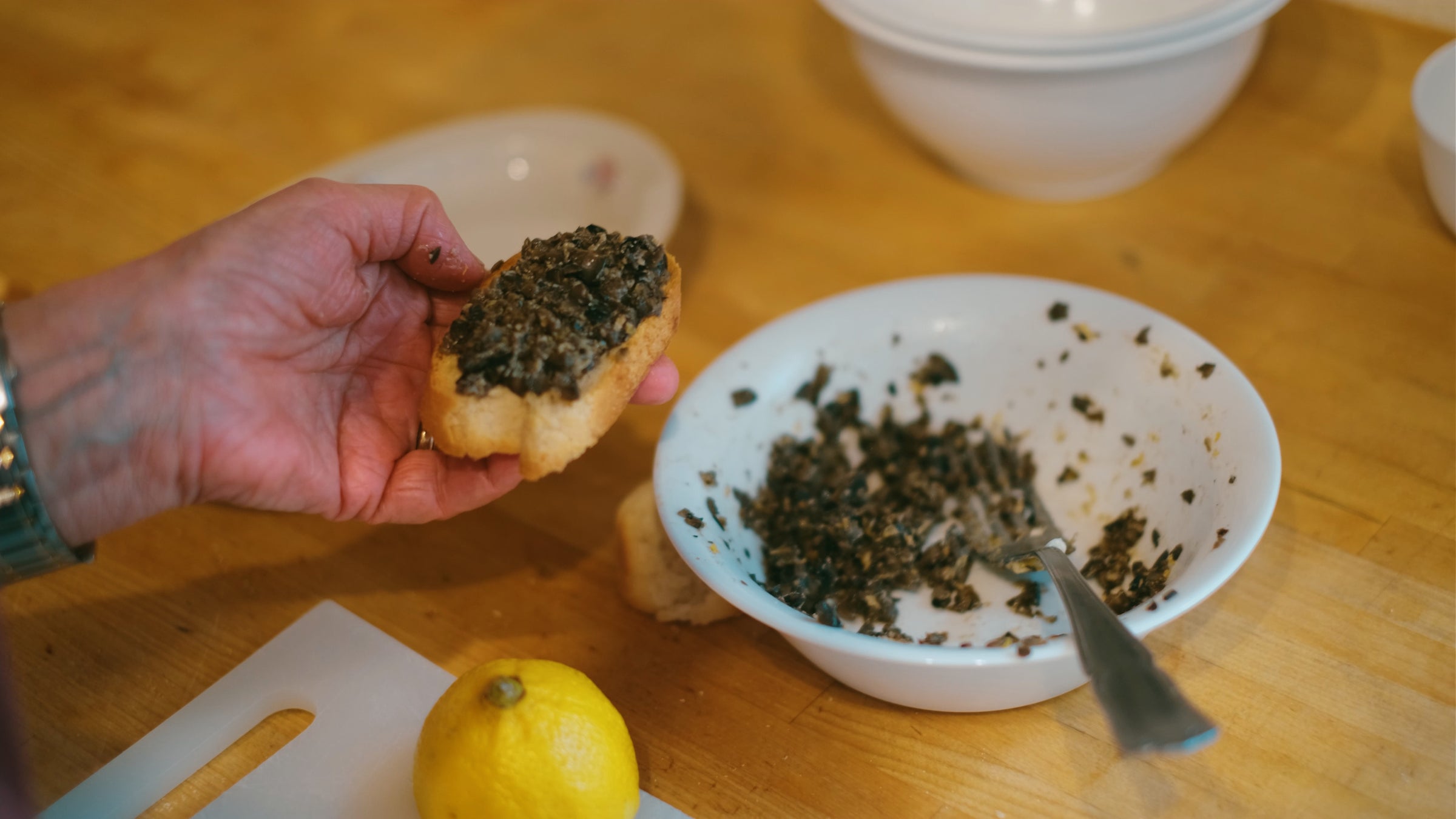
Liliana’s Sweet-and-Sour Peppers
Ingredients (Serves 4)
- 3 red bell peppers
- 2 yellow bell peppers
- 2 tbsp sugar
- ¼ cup white wine vinegar
- 4 tbsp olive oil
Salt, to taste
Method
- Wash, deseed, and slice the peppers into thin strips.
- Heat the olive oil in a large skillet. Add peppers and sauté for about 5 minutes.
- Sprinkle in the sugar and pour the vinegar over, stirring until the peppers are glossy and coated.
- Season with salt and cook until tender, about 10–12 minutes.
Serve warm or at room temperature, as a side or antipasto.
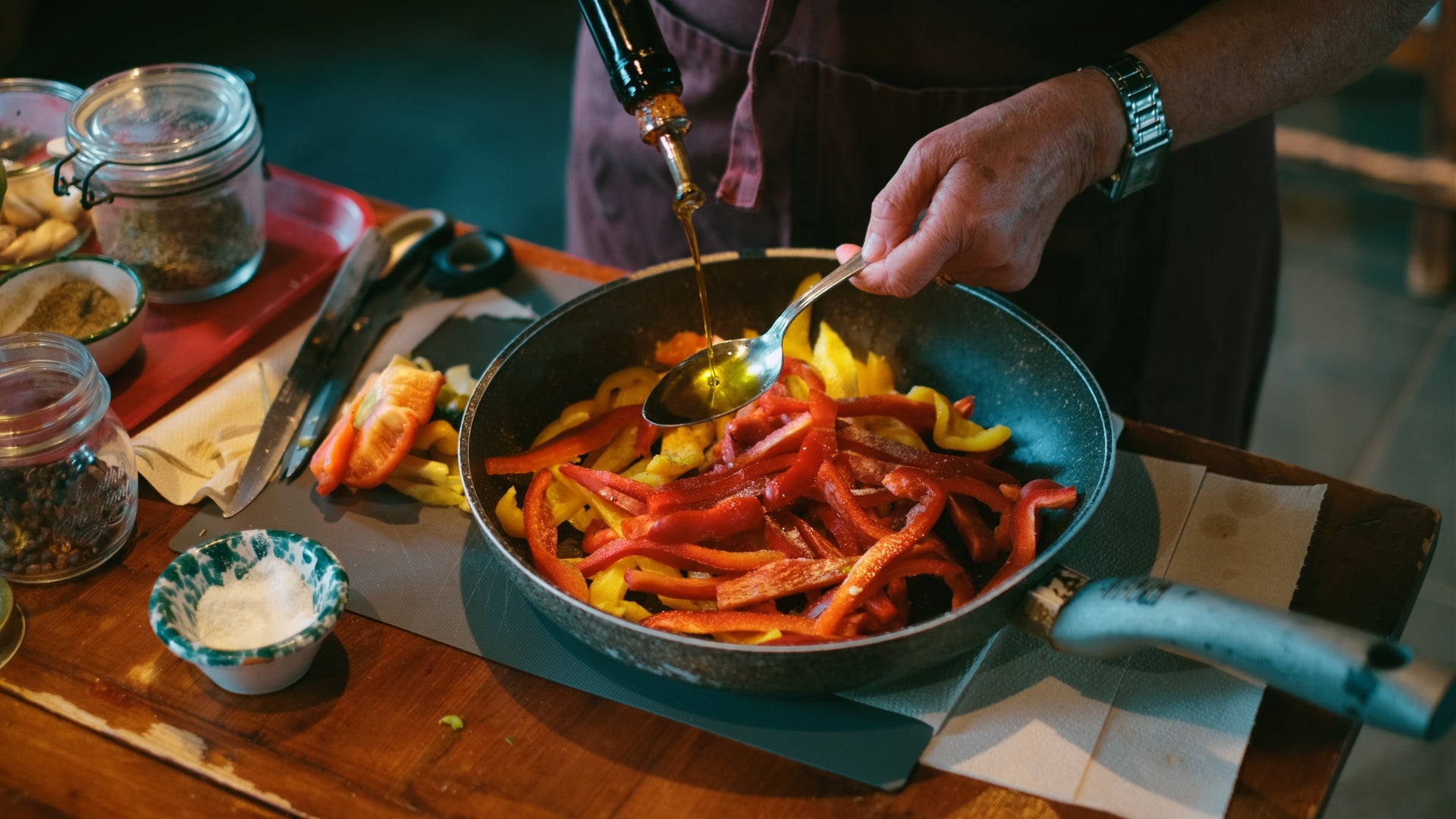
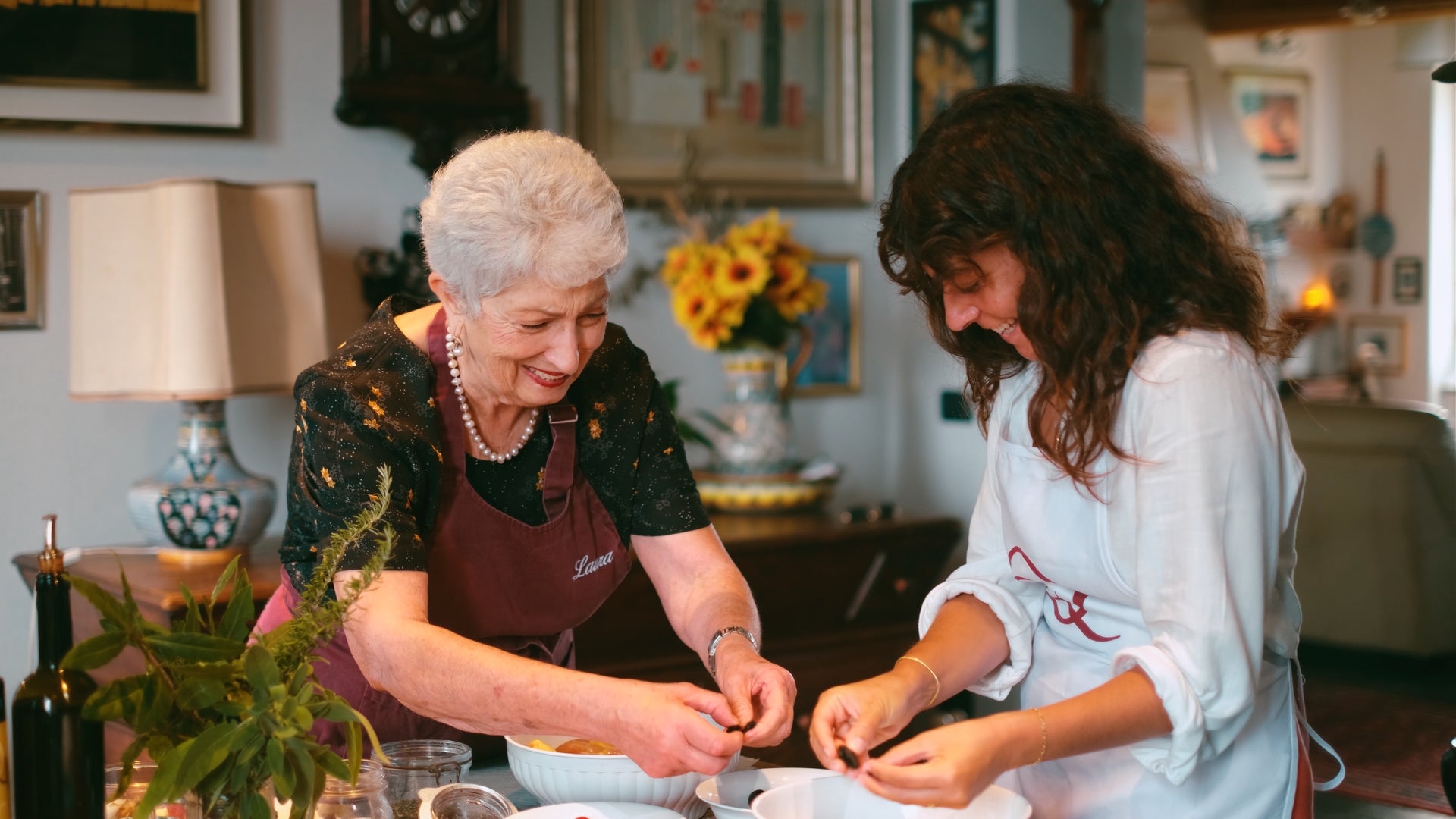
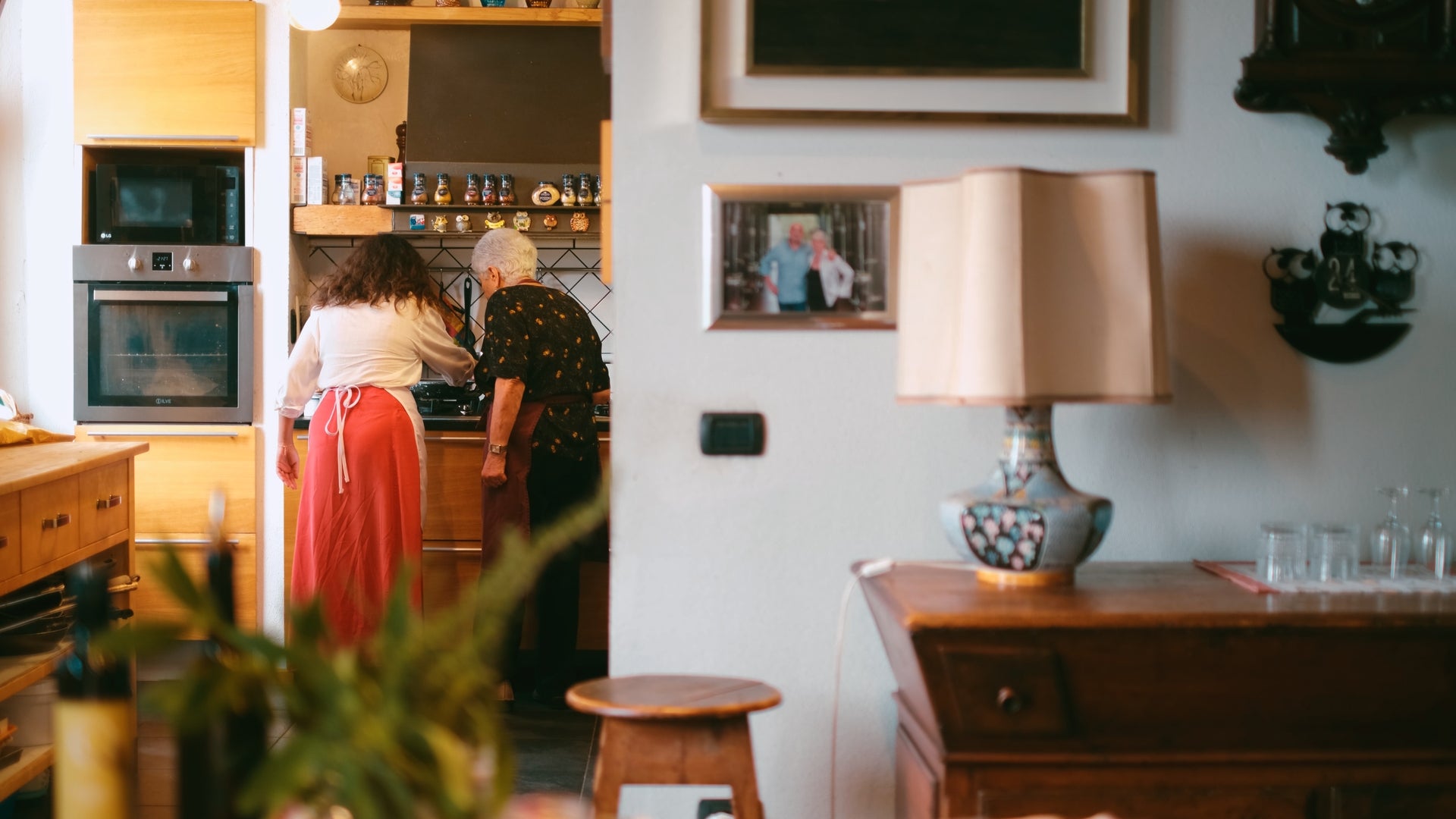
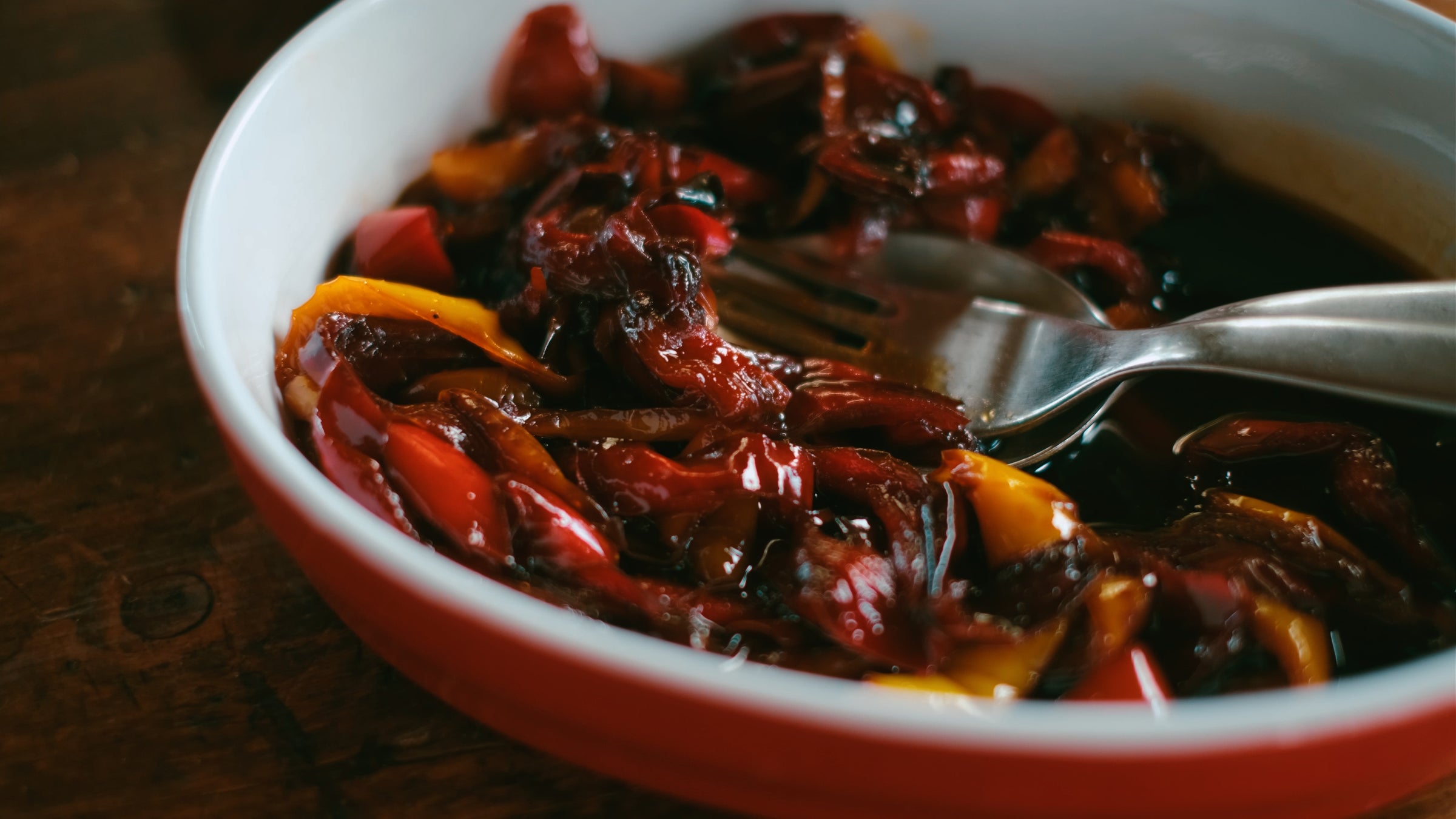
After lunch, we moved into Laura’s Parisian-style living room. Norma settled by her side, while owls of every size and material watched from the shelves. The space spoke of her life: her passions, her resilience, her stories. Laura recounted how Querceto was once a cluster of ruins bought by her father, and how she and her family turned it into the thriving estate it is today. Yet she also carved out her own path, creating cooking classes that connect her to people from all over the world.
Reflecting on the grandmothers I have met through Nonna Wisdom, I realize each is unique. Some are firmly rooted in family life, others guard ancient recipes, and others (like Laura) bridge tradition and the future. Yet they are all united by food. It is never just nourishment. It is memory, identity, belonging. A language of love spoken in kitchens across Italy. Traveling through Italy guided by grandmothers means discovering not only their recipes but also the lands that shaped them. Every dish carries the flavor of its soil, its history, its people. At Querceto, Laura’s chicken cacciatora and poor man’s caviar became chapters in a larger story: that of Tuscany, its vineyards, its hills, and the resilience of its women.
When it was time to leave, Laura walked me to the top of the stairs. Norma padded beside us, reluctant to say goodbye. From the path below, her husband Giorgio appeared, smiling with the curiosity of a man who, at ninety, still wants to be part of everything. Laura had “banished” him for the afternoon, when she had guests in the kitchen, she wanted to dedicate herself fully to them. Yet he still asked gently: “Did everything go well?” I couldn’t answer anything but yes. Because with a woman as extraordinary as Laura, it couldn’t have been otherwise.
